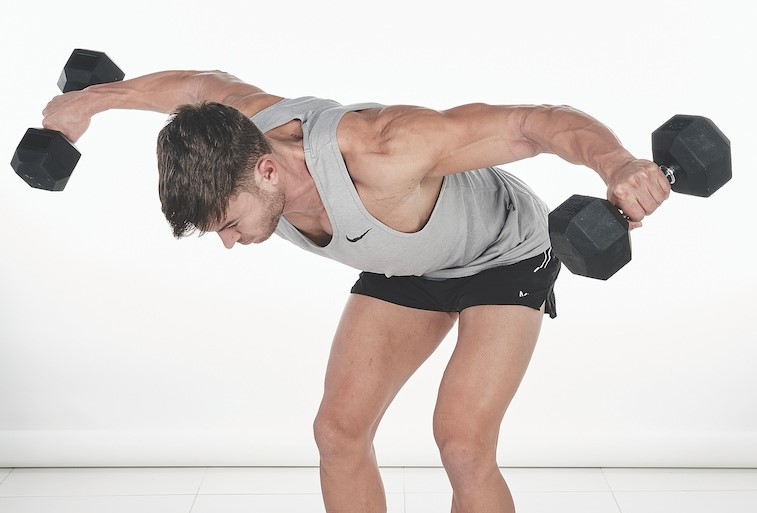When it comes to upper-body workouts, push and pull training often occupy separate days. However, this upper-body workout, which requires nothing more than a pair of adjustable dumbbells or fixed dumbbell set, combines both push and pull exercises to activate every muscle from the waist up.
The benefits of push/pull training are numerous, but chief among them is balance. This method makes it very difficult to either overtrain, or overlook, certain areas – ideal for developing a well-rounded physique. It’s for this reason that we incorporate push/pull training into our own regimes.
Rater than over- or under-training particular muscle groups, each muscle gets its time in the spotlight – and by the end of this dumbbell-only workout, your entire upper body will be singing (or screaming) in perfect harmony.
Why you can trust us
At Men’s Fitness we pride ourselves on delivering information that serves a singular purpose: to improve some aspect of your health, fitness or wellbeing. For over 16 years, we’ve been publishing authoritative health and fitness content – written by our expert editors and contributors – in the form of the monthly Men’s Fitness magazine. Each of our workouts has been created by either a highly experienced editor or expert contributor, and has been tested and used in real-world situations.
Exercises in this upper-body dumbbell workout
- Dumbbell reverse bent-over row
- Reverse dumbbell flye
- Dumbbell pullover
- Incline dumbbell bench press
- Dumbbell crush press
- Dumbbell flye
- Finisher: dumbbell press-up to renegade row
1. Dumbbell reverse bent-over row
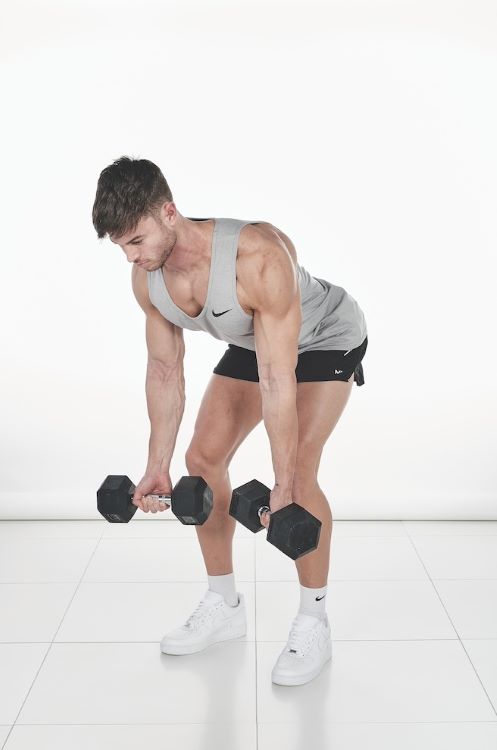

| Reps | 12, 10, 8, 8, 8 |
| Sets | 5 |
| Rest | 60 secs |
Why we like it: The row is a compound exercise that’s great for building a strong back – crucial for so many other exercises. And the reverse grip hits your arms and lower body too, emphasize the lats and biceps. Bracing the movement also activates the muscles in your core.
How to do a dumbbell reverse bent-over row:
- Stand with feet hip-width apart, holding a pair of dumbbells with palms facing forward
- Bend your knees, press your hips back, keep your chest up and your shoulders down
- Row the weights up to your sides, keeping your elbows tucked in
- Pause at the top, then return
2. Reverse dumbbell flye

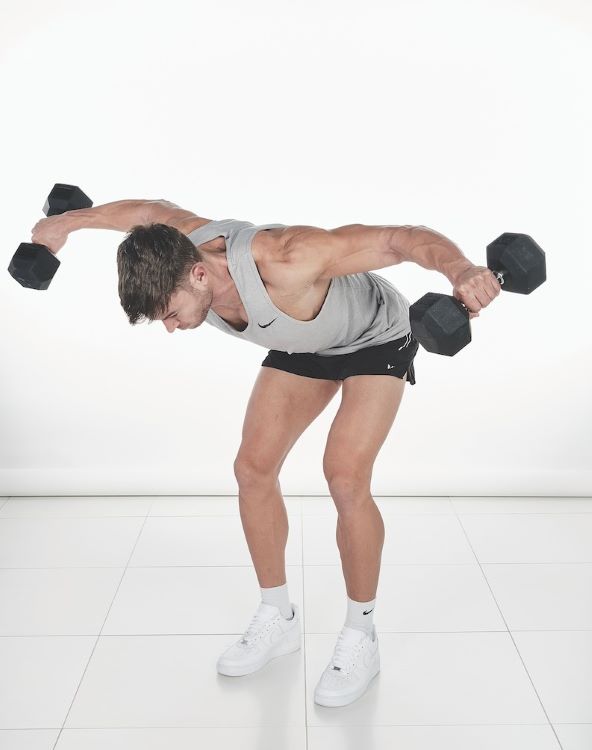
| Reps | 12, 10, 8, 8, 8 |
| Sets | 5 |
| Rest | 60 secs |
Why we like it: The reverse dumbbell flye is an isolation exercise used to train the muscles that help extend your arms horizontally. It’s excellent for working your rotator cuffs, which can often get overlooked, and hits the rear deltoids and trapezius. It’s useful for training the antagonists to the muscles you use most often for pressing exercises.
How to do the reverse dumbbell flye:
- Stand with feet hip-width apart, holding both dumbbells with palms facing towards you
- Hinge at the hips and lower your torso towards the floor. Your chest should be almost parallel with the ground in the starting position
- Extend your arms directly towards the floor and bend your elbows slightly – your palms should be facing each other
- Arc the weights to the side, then up as you squeeze your shoulder blades together, maintaining a bend in your elbows
- Slowly perform the same movement in reverse to return to the start
3. Dumbbell pullover
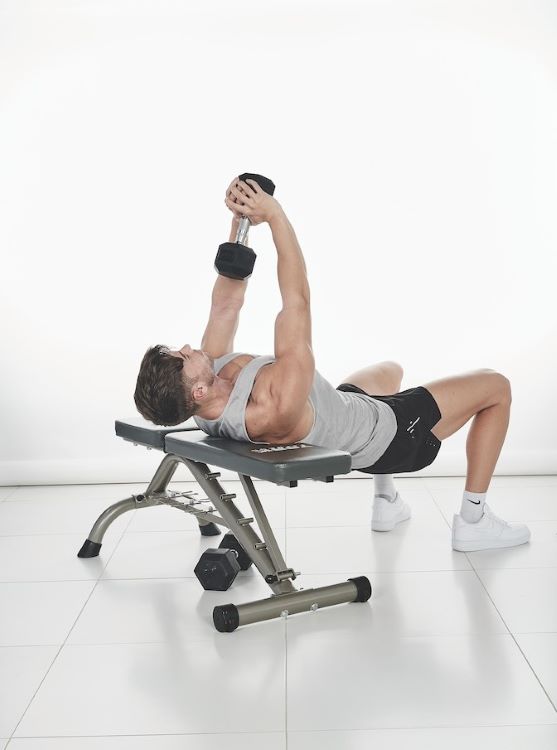
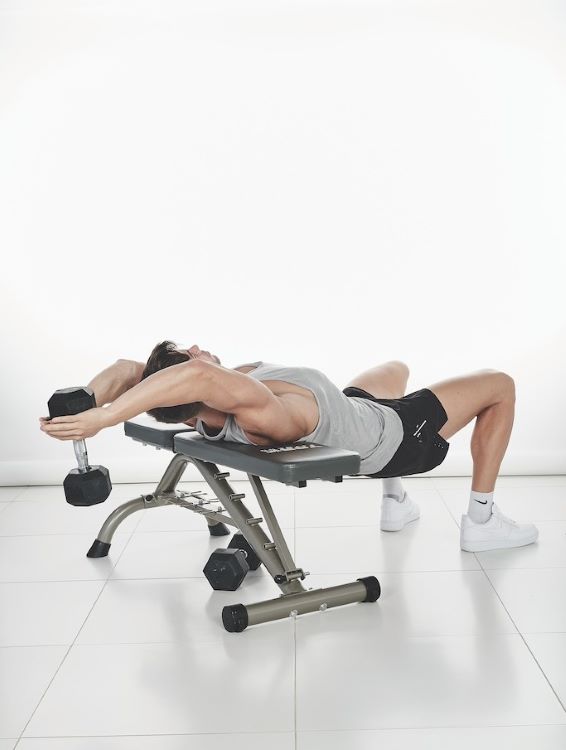
| Reps | 12, 10, 8, 8, 8 |
| Sets | 5 |
| Rest | 60 secs |
Why we like it: The dumbbell pullover not only targets your back and chest, it helps improve mobility in your shoulders too. Done correctly it will work the lats, teres major, triceps, posterior deltoids and wrist flexors. When you slow down and focus on technique, you’ll also be engaging your abdominal muscles for an added core workout.
How to do a dumbbell pullover:
- Lie on a bench with your feet flat on the floor
- Holding a dumbbell over your chest, keep your arms long and begin to lower the weight over your head towards the floor
- Pause when you feel a good stretch through your pecs and upper back, then squeeze your lats to bring the dumbbell back to the start
4. Incline dumbbell bench press
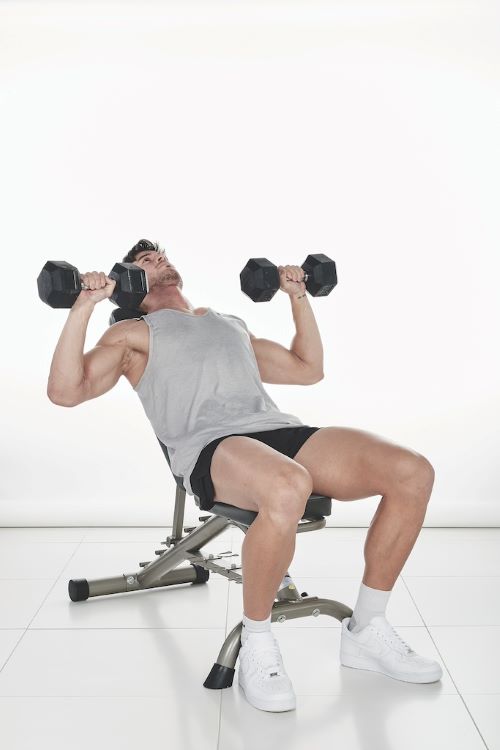
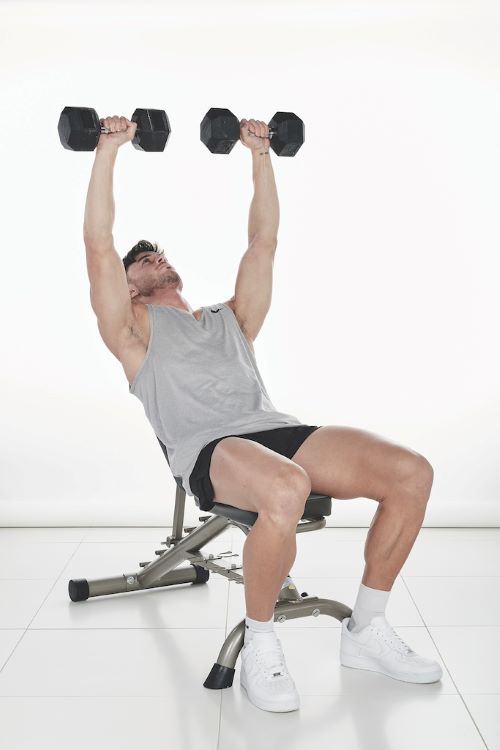
| Reps | 12, 10, 8, 8, 8 |
| Sets | 5 |
| Rest | 60 secs |
Why we like it: The incline dumbbell bench press targets the chest, shoulders and triceps and, unlike using a barbell, it does so independently on each side. The reason for using an incline is to shift the movement’s focus to the upper portion of the pectoral muscle groups and the front of the shoulder. That way, if done regularly, you’ll see more significant hypertrophy (muscle growth) of the upper chest.
How to do an incline dumbbell bench press:
- Set the bench to a 45-degree incline
- Pick the dumbbells up off the floor and sit on the seat of the bench
- Kick your knees up as you lean back onto the bench – using the momentum from your kick to bring the dumbbells to the sides of your chest
- Tense your glutes and core, then powerfully press the weights towards the ceiling, stopping when the dumbbells are an inch or so away from each other
- Lower with control – all the way down until the dumbbells are at chest height – then repeat
5. Dumbbell crush press
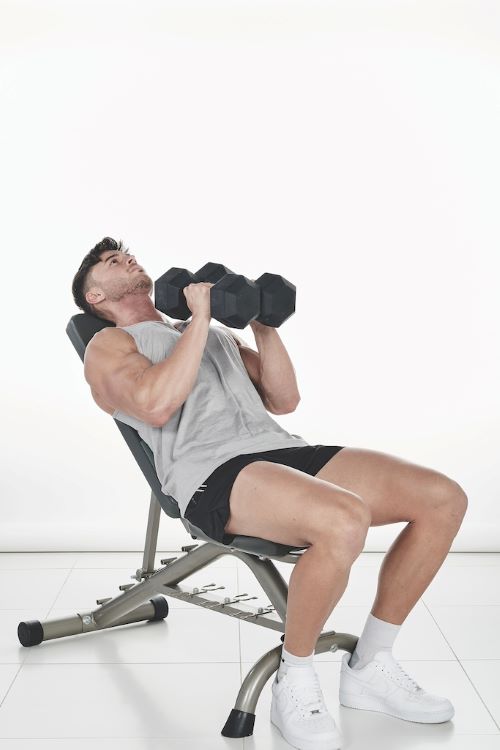
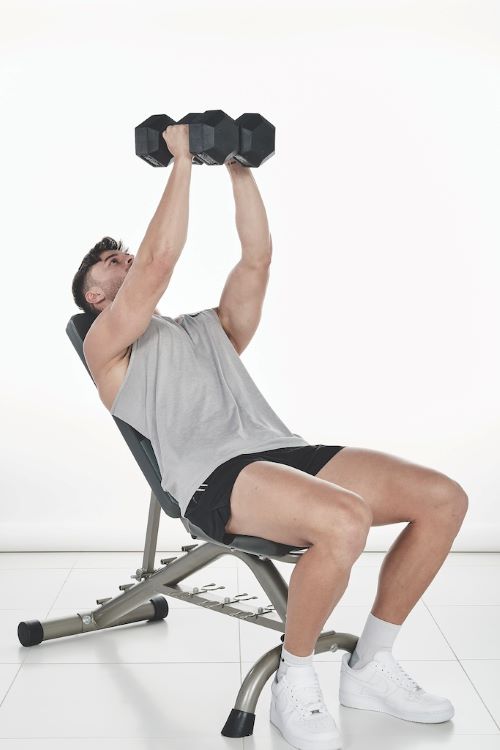
| Reps | 12, 10, 8, 8, 8 |
| Sets | 5 |
| Rest | 60 secs |
Why we like it: The dumbbell crush press is a dumbbell chest press variation that works your chest, triceps and shoulders. Having your hand close during the crush press, your triceps are forced to do most of the work, and so are targeted more than any other muscle.
How to do a dumbbell crush press:
- Sit on a flat bench, with dumbbells held on your thighs
- Lie back, keeping the weights close to your chest
- Once you’re lying flat on the bench, the dumbbells should be held together in the centre of your chest
- Force the weights together, then press them up until your arms are extended
- Continue to ‘crush’ the dumbbells together as you lower under control
- Once the dumbbells touch your chest, push them back to the starting position
- Repeat for the desired number of repetitions
6. Dumbbell flye
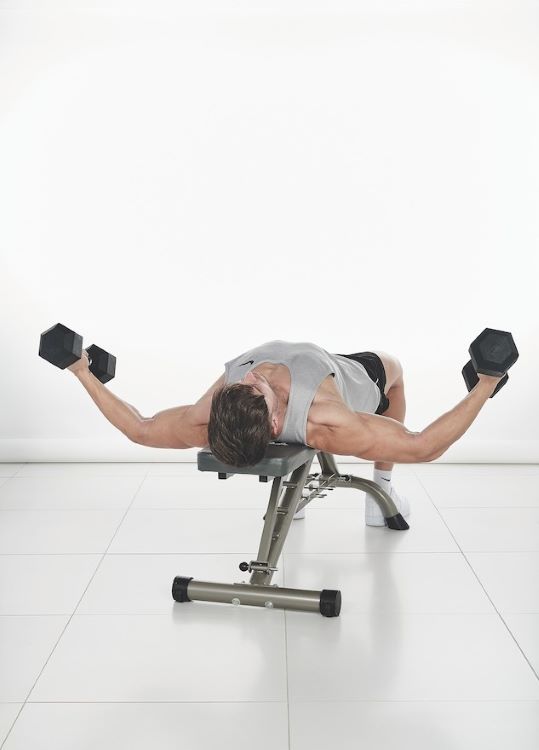
| Reps | 12, 10, 8, 8, 8 |
| Sets | 5 |
| Rest | 60 secs |
Why we like it: The dumbbell flye targets your pectoral muscles, particularly the lower and outer pecs. It doesn’t end there, though, as your delts, biceps, scapular stabilizers and rhomboids, among other muscles, will also be targeted.
How to do a dumbbell flye:
- Lie back on the bench, holding a dumbbell in each hand with arms straight and palms facing
- With your chest up and a slight bend in your elbows, lower the weights out to the sides until you feel a good stretch across your pecs
- Reverse the movement, focusing on moving the weights with your pecs, until your arms are extended
- Stop the weights just before they touch and squeeze your pecs for a count of one – you should really feel it in your inner chest
7. FINISHER: Dumbbell push-up to renegade row
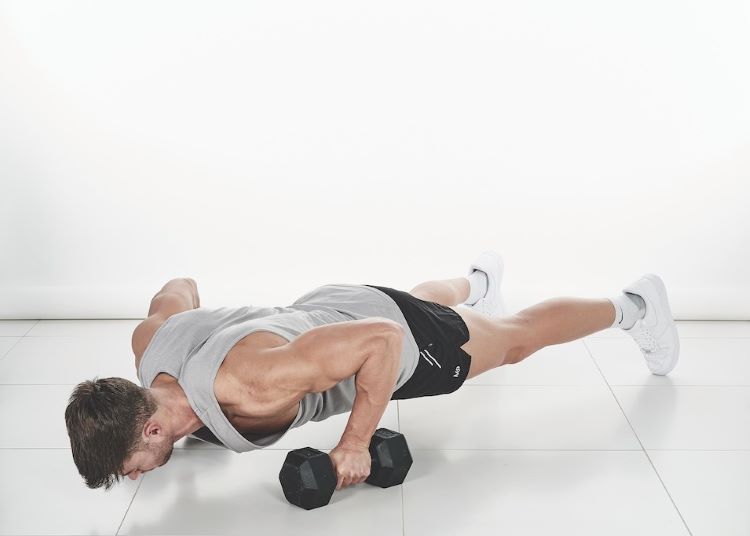
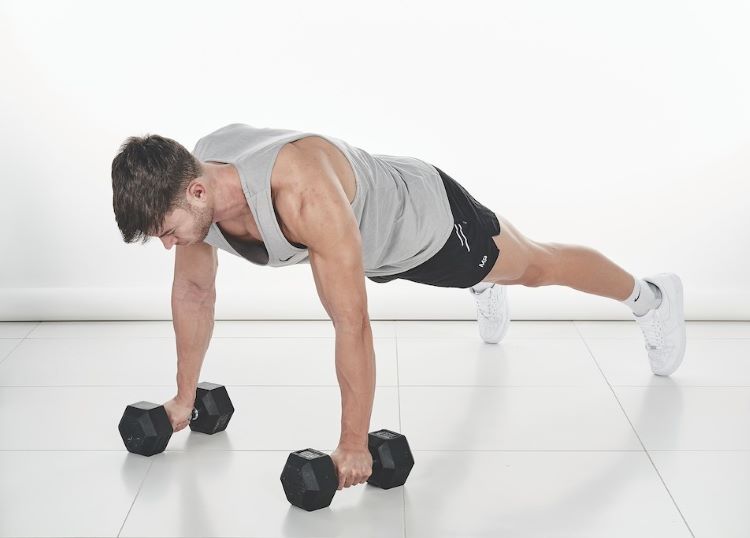
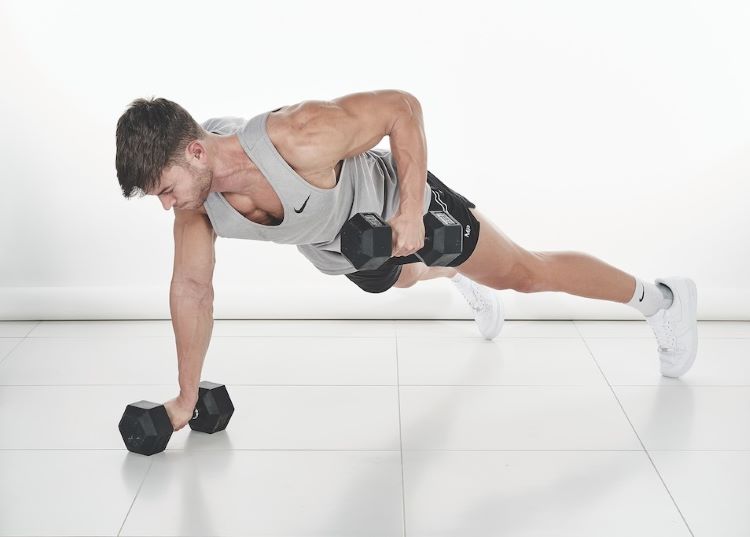
| Reps | 30 secs AMRAP |
| Sets | 5 |
| Rest | 30 secs |
Why we like it: What’s not to like about this combination? The push-up part works your chest muscles, triceps, shoulders, core and back while the renegade row shifts the emphasis to your upper back, including the rhomboids and rear deltoids.
How to do a dumbbell push-up to renegade row:
- Assume a push-up position with your feet hip- to shoulder-width apart and a dumbbell in each hand directly below your shoulders
- Keeping your core engaged and elbows tucked, lower your chest until it’s almost in line with your hands, then push back up to the starting position
- Row the dumbbell in your left hand towards your ribs
- Lower the dumbbell back to the starting position, press-up, then row the right-hand dumbbell
- Keep the tempo up to complete as many reps as possible in the time
Model: Alex Beattie | Photography: Eddie Macdonald
These York Fitness Rubber Hex dumbbells are ideal for these exercises:
Related content:

